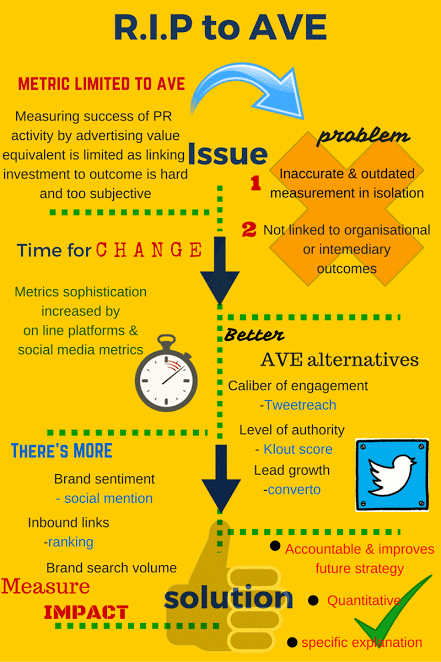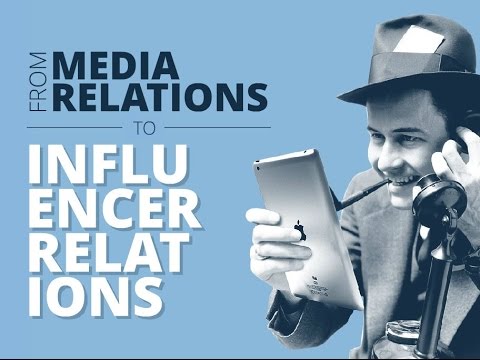We live in a time where almost everything is driven by and evolves around digital. PR certainly isn’t an exception to this, and as a result of continuous digital trends, various areas of PR practise have had to adapt to ensure that communication is successful within such a dynamic media landscape. Practitioners, both in house and in agency, have no alternative option but to re-think their tactics in order to follow a strategy which is cohesive with a digital-orientated approach. Today, the internet (especially social media) appears to be the powerhouse of modern PR strategy. Online platforms are where: audiences are waiting to become active participants with brands; engaging content is created and amplified; and where, if effective digital practise is initiated, mutually beneficial relationships prosper.

Adapting to improve accountability
The digital driven industry has demanded PR to become more sophisticated, requiring content and analysis strategy to improve. The use of SEO, a fundamental area of modern PR, has sophisticated online strategy. Measurement has also developed, and my infographic below shows how metrics have improved. It highlights that it’s more effective, valuable and useful to measure aspects of online reputation rather than AVE.

Articles which inspired this image, and explain it further, are here: Alternatives to AVE; measurement should explain ; monitor to measure ; AVE alternatives and social media metrics.
Adapting media relations
Within today’s practise the use of the traditional press release to communicate with journalist has significantly decreased. Although, like Stephen Waddington, we CANNOT SUPPORT the claim which states ‘the press release is dead’. We can instead, state that the universally recognised form of organisational communication has changed. The successful press releases are now the ones that have been kept alive by being modified to suit the digital-led industry – becoming documents that are valuable and integrated within an overall strategy, and are interactive by including multi-media, links, podcasts and further resources.
Although press coverage is still a main goal, the concentration to achieve this via communicating and building relationships with the mass media and traditional media outlets has shifted. Media relations now focuses on earned media across online platforms. The evolvement of such digital platforms has lead practitioners to broadly and rapidly disseminate information through social media press and social media newsrooms, rather than through print or traditional broadcast. Due to the internet becoming so dominant in society and therefore being a significantly important platform for PR, Practitioners have had to identify that anyone can be a journalist. Due to the huge upturn of bloggers now taking over from print as distributers of news, blogger relations has developed as an extension of media relations. Targeting and building relationships with citizen journalists has become just as important (if not more important) as communicating with the traditional press office. The industry have had to adapt their approach to media relations in order to reach fragmented online target audiences, and therefore, the traditional press release has had to be modified both in its format and distribution. It has had to become something that is focused on a thought leader angle to attract and influence more than just the one reporter, who ten years ago, you would have tried to sell the story to over the phone.

Adapting to media and audience fragmentation
Unlike digital media outlets, it is evident that the traditional media channels are now less efficient in reaching a vast number of people in a matter of seconds. In response to this industry trend, organisations now focus on meeting the requirements of their online audiences to meet objectives and drive success. In an age ‘where print decline, online soars’‘where print declines, online soars’ The Independent, an established and leading print publication, has recently recognised that the opportunities from an online only new site far outweighs that of traditional print. It seems that the digital transition of The Independent may be the catalyst for media outlets alike to do the same.
It has been identified that PR can enhance and be effective within a marketing strategy when it comes to reaching the increased variety and diversity of today’s increasingly fragmented audiences. This meaning that it’s now paramount for PR to integrate itself with Content Marketing to reach goals the two disciplines share- brand loyalty, brand awareness and thought leadership, to name a few. This integrated approach has become a fundamental factor for PR to effectively keep up with the growing nature and complexity of information dissemination across fragmented media channels. Due to the increased size and variety of media channels and audience segments, the use of content marketing within a PR strategy is imperative. Having accurate and specific understanding of a target audience enables an organisations communication to overcome the huge ‘clutter of noise’ and successfully initiate online campaigns.
Adapting content
As audiences now have access to a huge scope of information, Practitioners have had to adapt their content to influence and engage their audiences more effectively. The use of content marketing is now used to place information at the optimum time and place, and in the optimum way. As well as this, content now needs to meet the requirements of changing audience behaviour – which now demands more engagement and interaction than ever before. It seems that video is the powerhouse of online content and PR departments have had no choice but to integrate multi-media into communication to gain people’s attention. One effective technique which seems to dominate strategy is user generated content . Image and Video is very much at the centre of this, giving opportunity for content and conversation to be created by brand advocates. This is more effective for content amplification compared to communication tactics that have attempted to gain momentum across the web without any participation from the target audience. With the fast paced nature of the digital media landscape, Practitioners have had to adapt online communication tactics to make evergreen content – giving the content message a recyclable capability which achieves as much online engagement the tenth time it’s communicated as the first time it was released.

What a great article! I want to say that I completely agree with you regarding how media relations have focused more on online platforms through earned media than traditional media. However, it is important to say that print press hasn’t died it just lost its level of importance. We as PR practitioners need to understand where our audiences are interacting in order to be in touch with them. Also I agree with you on how the way that normal people are now becoming new type of journalists through blogs.
LikeLiked by 1 person
Very good article… Enjoyed your take on the current trend of PR
LikeLiked by 1 person
Thank you for your comment, It’s great to share opinion. It’s important that people value the digital nature which dominates today’s PR industry.
LikeLike
I think you’ve really analysed in depth the changing landscape that as PR practitioners we face on a daily basis. Its really important that PR keeps up to date with this and a point that I like is that the press release is not dead but organisations need to keep up with how to move the press release with the digital era. I really like your take on it Holly, great article!
LikeLiked by 1 person
Hi Kerry. Thank you for your comment, It’s great to hear your thoughts and I’m glad the value of the ‘re-vamped’ press release is recognised. I think what is important to take from this post, is to recognise that although the industry is always changing and developing due to the dominance the digital landscape has in PR, it is paramount for traditional practises to remain…but in a way that has been modified. This is so, core PR techniques such as the press release, remain coherent with the development of information dissemination and fragmented on line audiences to still achieve PR objectives.
LikeLike